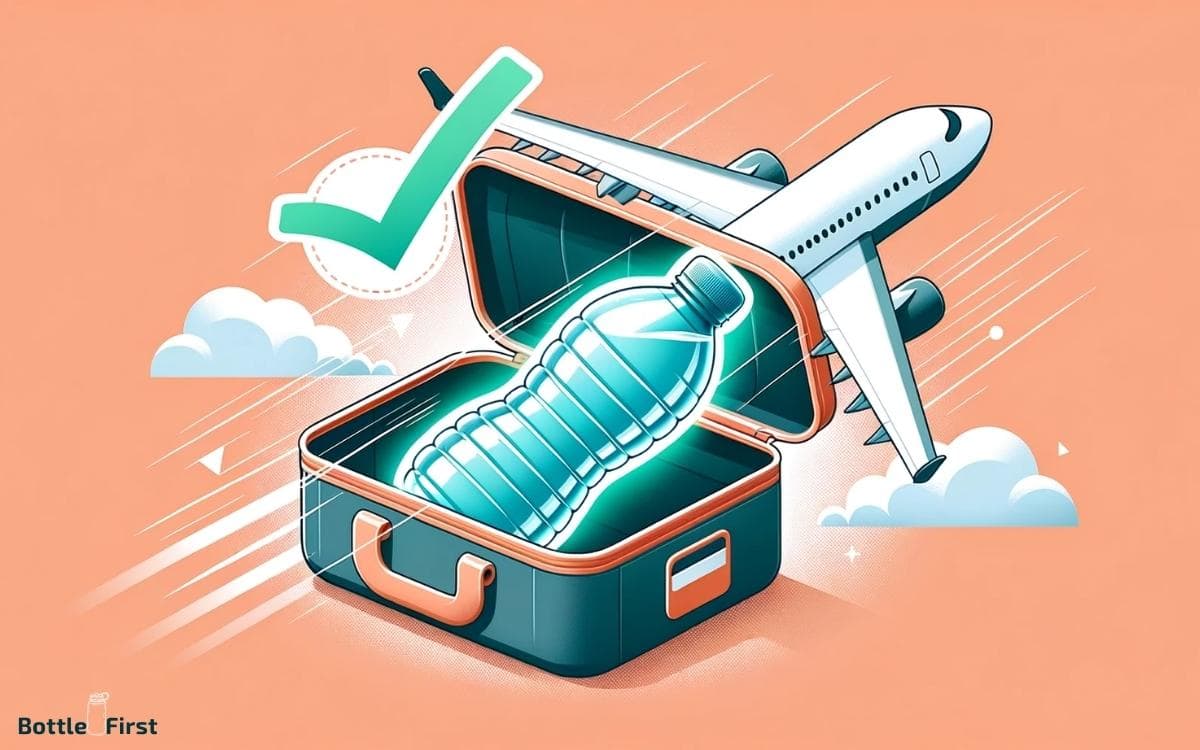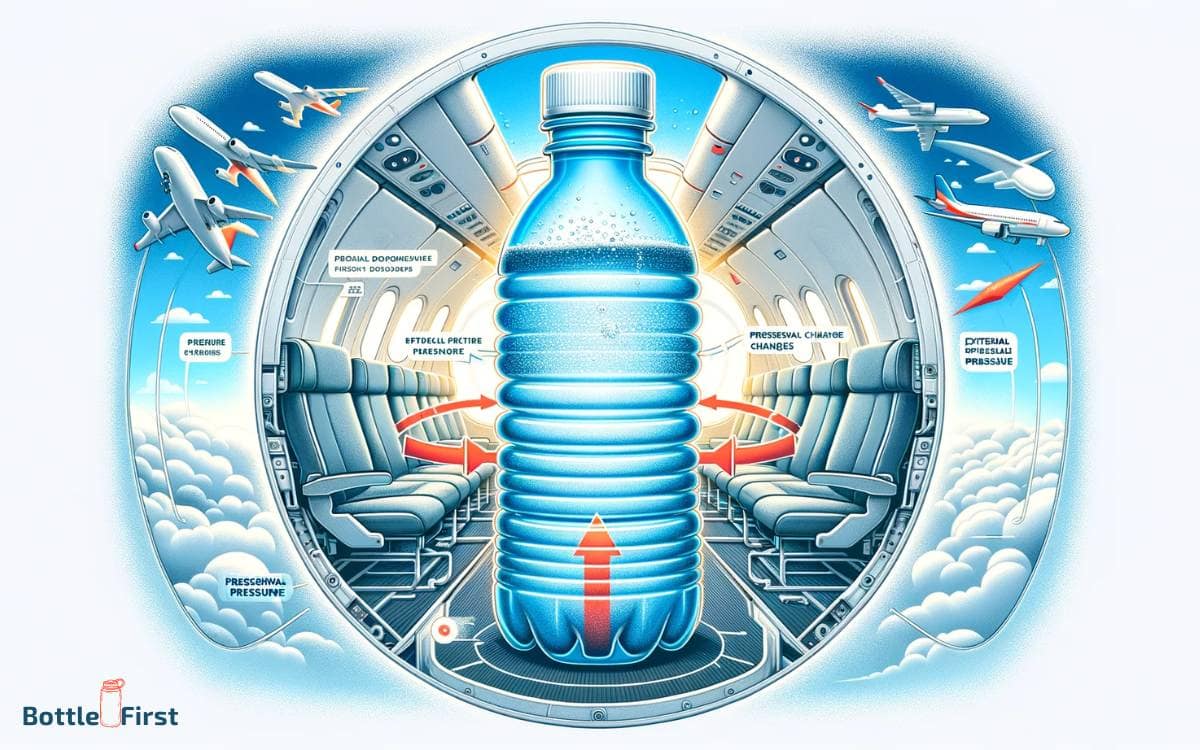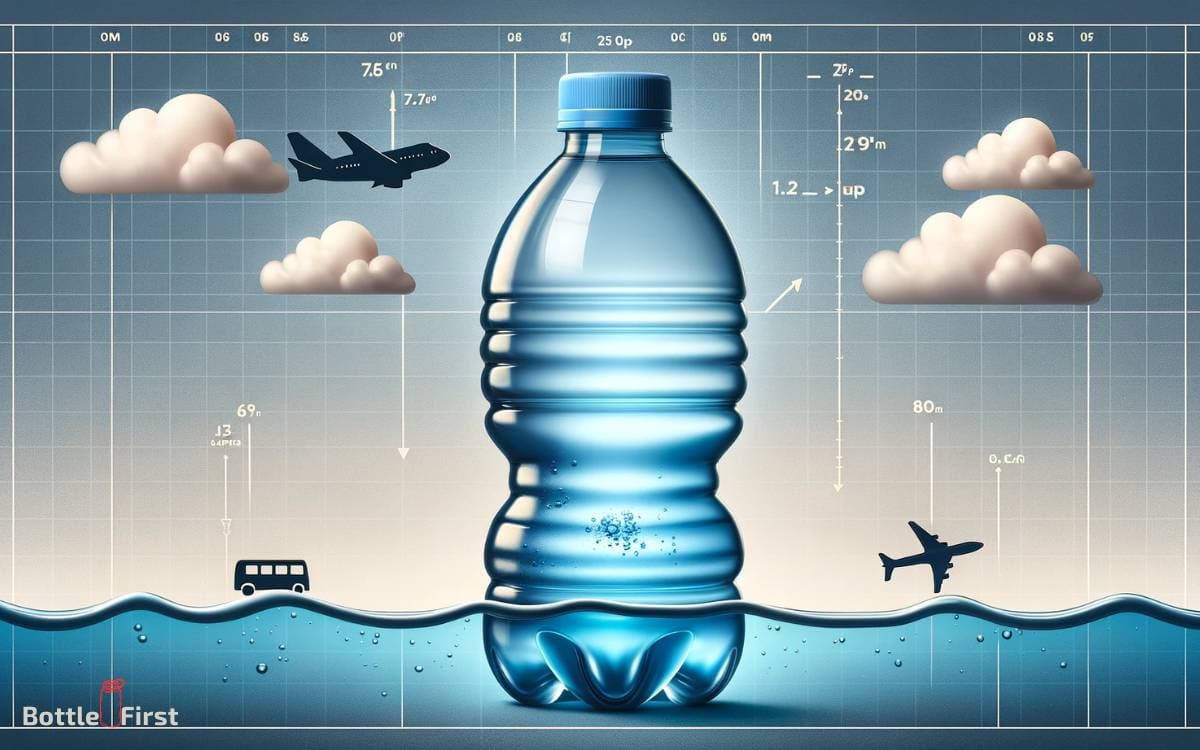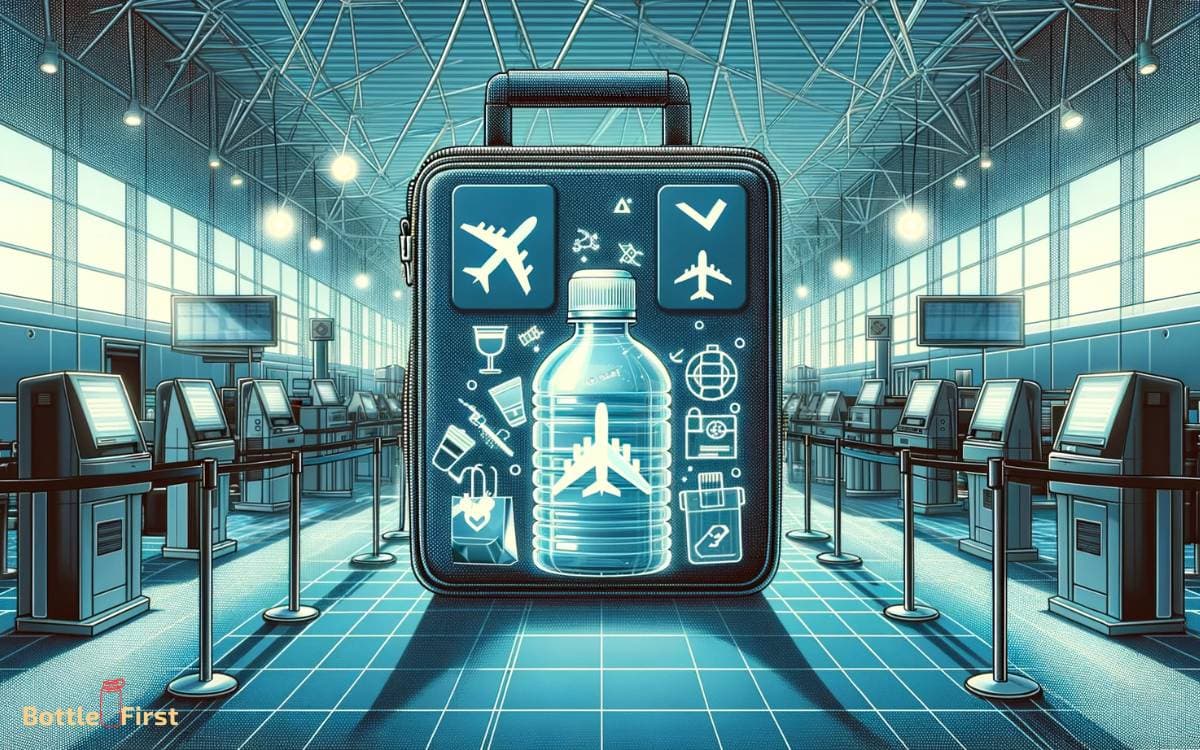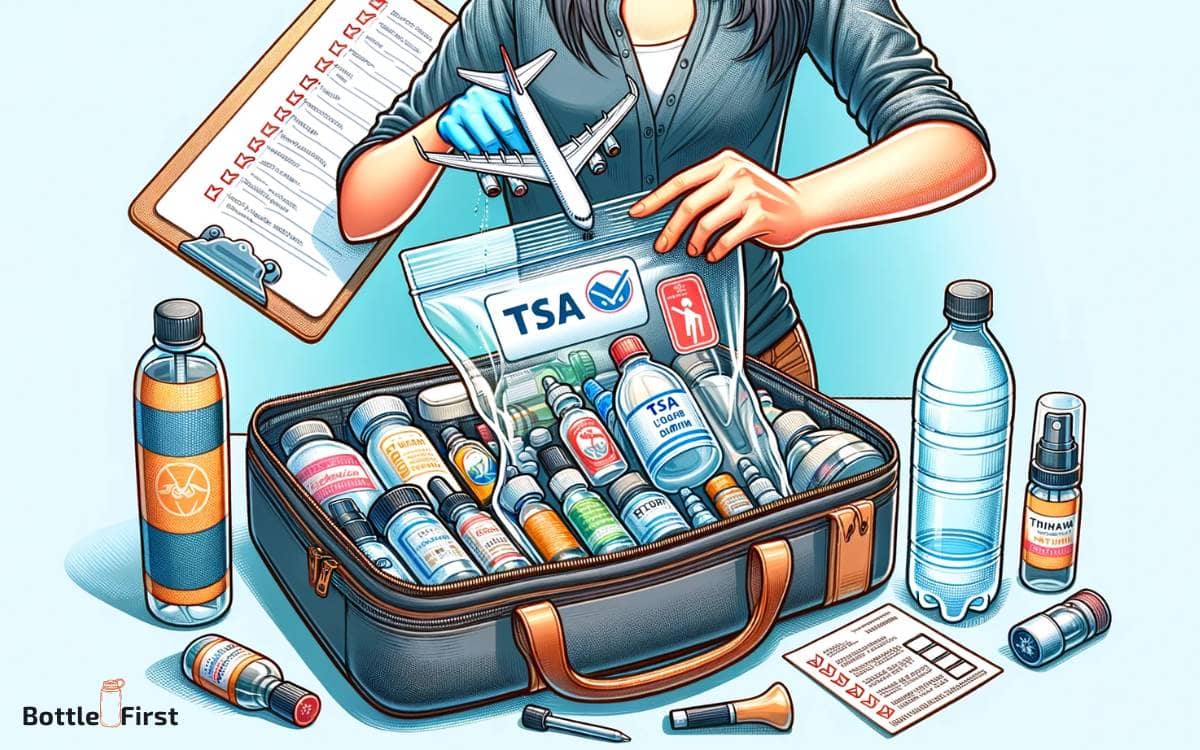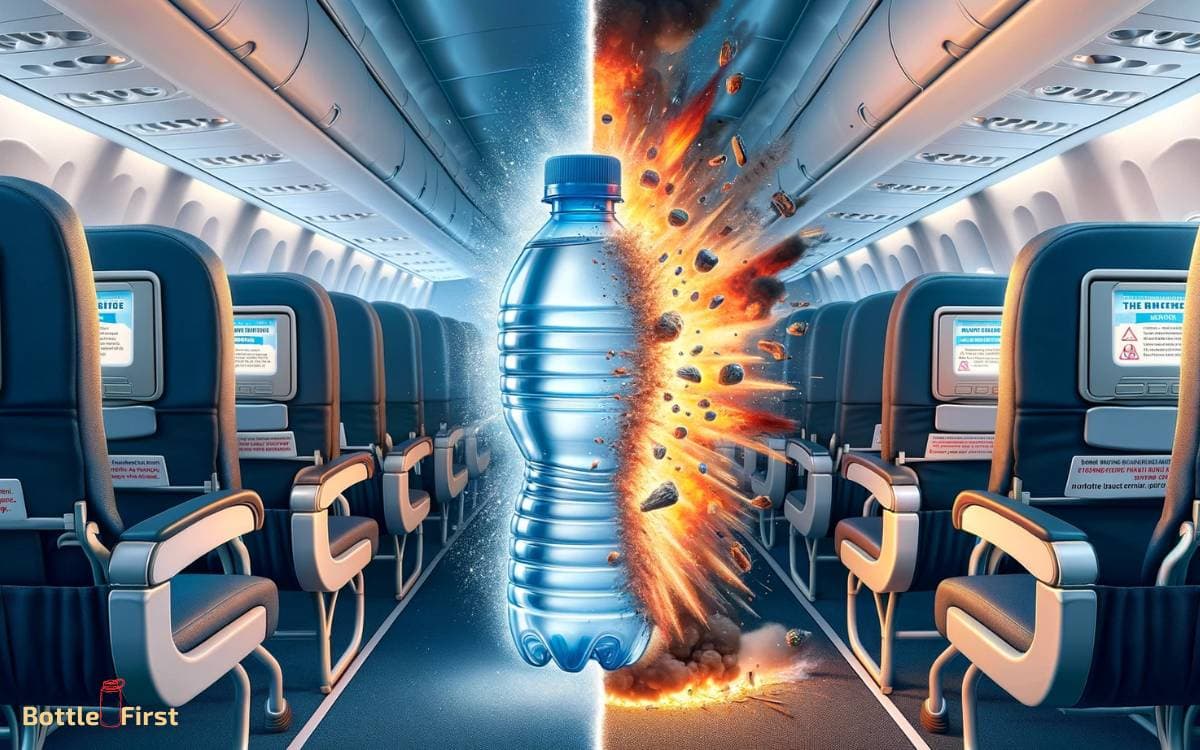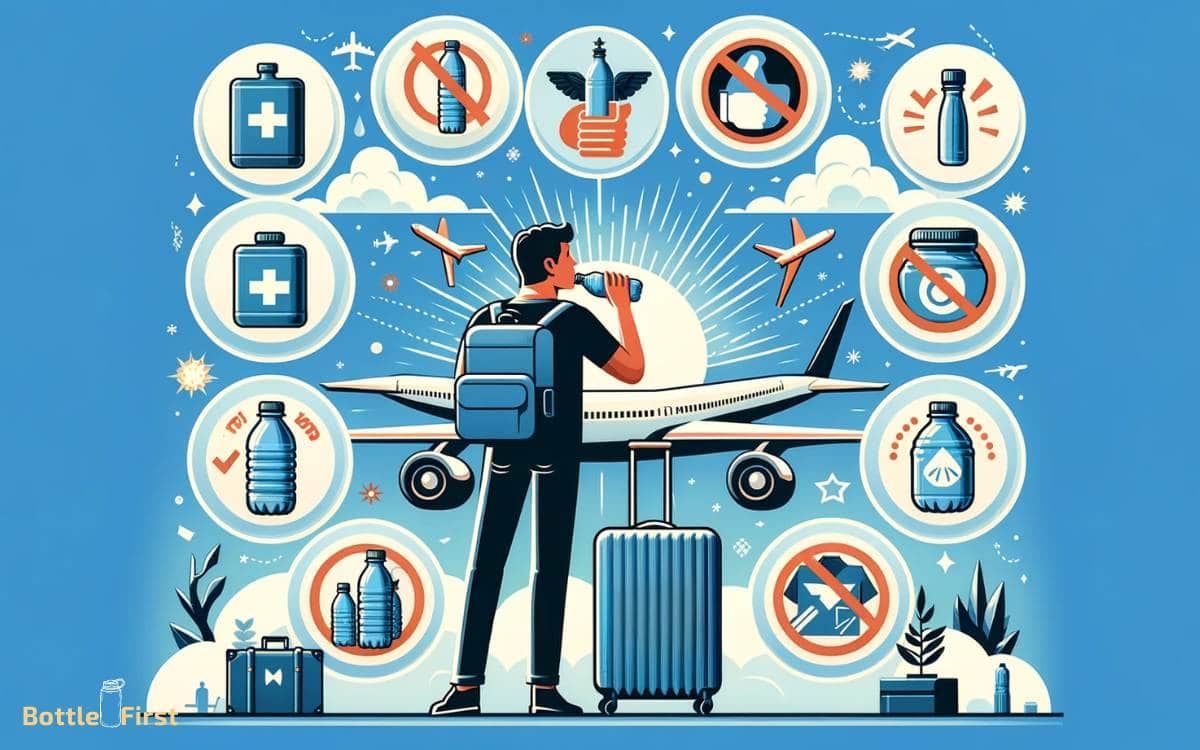Will a Plastic Water Bottle Explode on a Plane? No!
No, a plastic water bottle will not explode on a plane. The design of both the airplane cabin and the bottle allows them to withstand the changes in air pressure experienced during flight.
When flying, the cabin pressure of an airplane is regulated to ensure the safety and comfort of passengers, which typically is equivalent to the air pressure at 6,000-8,000 feet above sea level.
Plastic water bottles are designed to handle pressure changes that occur during flights.
However, some changes may be observed:
Flying with a plastic water bottle is generally safe. Just keep the cap on tight and avoid overfilling to prevent any leaks or spills as the bottle contracts or expands due to pressure changes.
Key Takeaway
The Science Behind Pressure Changes
Understanding the science behind pressure changes is crucial for determining the potential impact of plastic water bottles during air travel.
As an aircraft ascends, the pressure outside the bottle decreases, causing the air inside the bottle to expand. Conversely, during descent, the external pressure increases, compressing the air inside the bottle.
This fluctuation in pressure can lead to deformation or even rupture of the bottle, especially if it is not designed to withstand such changes.
The ability of a plastic water bottle to withstand these pressure differentials depends on its material, design, and structural integrity.
Now, let’s delve into the different types of plastic water bottles and their varying capabilities to withstand pressure changes during air travel.
Types of Plastic Water Bottles
As we transition from discussing the science behind pressure changes to exploring the types of plastic water bottles, it is essential to consider the varying capabilities of different materials and designs in withstanding pressure differentials during air travel.
When it comes to plastic water bottles, there are several types to consider:
- Polyethylene Terephthalate (PET): Commonly used for single-use water bottles due to its lightweight and durable nature.
- Innovation Potential: Research into advanced forms of PET that offer even higher resistance to pressure differentials.
- High-Density Polyethylene (HDPE): Known for its sturdiness and ability to resist impact.
- Innovation Potential: Exploration of additive-enhanced HDPE for increased pressure resistance.
- Polycarbonate: Recognized for its clarity and shatter-resistant qualities.
- Innovation Potential: Development of next-generation polycarbonate blends with superior pressure tolerance.
Understanding the properties and potential innovations within these plastic bottle materials is crucial for ensuring their safety during air travel.
Effects of Altitude on Liquids
At high altitudes, liquids experience a decrease in pressure, potentially leading to expansion and, in some cases, container rupture.
This phenomenon occurs due to the lower atmospheric pressure at higher altitudes, causing the gas inside the container to expand and exert more pressure on the walls of the container.
The effects of altitude on liquids can be significant, especially for carbonated beverages and sealed containers.
As the plane ascends, the pressure decreases, causing the gas inside the liquid to expand. This expansion can lead to an increase in internal pressure, potentially causing the container to burst.
Understanding the impact of altitude on liquids is crucial for ensuring the safety of various products during air travel and highlighting the importance of appropriate packaging and storage considerations.
Safety Regulations for Air Travel
The impact of altitude on liquids during air travel necessitates strict adherence to safety regulations for the packaging and storage of various products.
To ensure safety and compliance, innovative approaches and technologies are being integrated into the aviation industry.
Here are key aspects of safety regulations for air travel:
- Pressure and Temperature Control: Advanced packaging must be able to withstand changes in pressure and temperature to prevent leaks or explosions.
- Security Screening Protocols: Stringent security measures are in place to detect any hazardous materials, ensuring the safety of all passengers and crew.
- Regulatory Compliance: Airlines and manufacturers must comply with international regulations to guarantee the safe transportation of liquids.
Understanding these regulations is crucial for both passengers and aviation professionals.
Tips for Bringing Liquids on Board
Understand the regulations and restrictions surrounding the transportation of liquids on board a plane to ensure compliance and a smooth travel experience.
When bringing liquids on board, it’s essential to adhere to the Transportation Security Administration (TSA) guidelines.
Opt for travel-sized containers of 3.4 ounces (100 milliliters) or less, and ensure they are placed in a clear, quart-sized plastic bag. Consider investing in reusable travel bottles to reduce single-use plastic waste.
Additionally, for longer flights, bring an empty reusable water bottle to refill after passing through security. Innovation in packaging has brought about collapsible and foldable bottles that save space in your carry-on.
By being mindful of these tips and embracing innovative solutions, you can seamlessly navigate the regulations while staying hydrated during your journey.
Real-Life Incidents and Myth-Busting
Real-life incidents and myth-busting are crucial aspects of understanding the potential risks associated with bringing liquids on board a plane.
Exploring the airplane water bottle myth, the impact of pressure on containers, and the safety regulations for liquids will shed light on the actual risks and dispel any misconceptions.
Airplane Water Bottle Myth
Airplane water bottle myth has been a topic of concern for many travelers, but it is important to separate fact from fiction to understand the real risks involved.
When examining the truth behind the airplane water bottle myth, it’s crucial to consider:
- Scientific Explanations: Understanding the principles of air pressure and temperature variations at different altitudes can clarify the likelihood of a water bottle exploding on an airplane.
- Real-Life Incidents: Analyzing documented cases of water bottles causing incidents on planes can provide valuable insights into the actual risks involved.
- Myth Busting: Debunking common misconceptions and exploring the actual safety measures in place can help travelers make informed decisions.
Pressure and Containers
Pressure differentials and container integrity are crucial factors to consider when evaluating the risks associated with carrying plastic water bottles on airplanes.
In real-life incidents, there have been rare cases of plastic water bottles becoming distorted or leaking due to changes in cabin pressure.
However, modern plastic water bottles are designed to withstand typical pressure differentials experienced during flights. The likelihood of a plastic water bottle exploding on a plane is extremely low.
Myth-busting experiments have shown that the risk is minimal, and the integrity of the bottle remains intact.
Innovations in materials and manufacturing processes have further enhanced the strength and resilience of plastic bottles, making them reliable containers for air travel.
Understanding the science behind pressure differentials and container integrity debunks the myth of exploding water bottles on planes, providing travelers with peace of mind.
Safety Regulations for Liquids
Continuing from the discussion of pressure differentials and container integrity, it is essential to address the safety regulations for liquids, focusing on real-life incidents and myth-busting.
Real-Life Incidents:
- Discuss specific instances where liquids have caused safety concerns during air travel.
- Highlight any changes or improvements in safety regulations as a result of these incidents.
Myth Busting:
- Debunk common myths surrounding the dangers of carrying liquids on planes.
- Provide scientific explanations to dispel misconceptions and alleviate concerns.
Innovative Solutions:
- Explore emerging technologies or materials that could enhance the safety of carrying liquids on planes.
- Discuss potential future regulations or advancements in packaging to mitigate risks associated with liquids during air travel.
Addressing the safety regulations for liquids in air travel requires a balanced approach that considers both real-life incidents and the dispelling of myths, while also seeking innovative solutions to enhance safety measures.
Best Practices for Avoiding Explosions
Passengers should routinely inspect their plastic water bottles for any signs of damage or degradation to minimize the risk of explosions during air travel.
It is essential to consider the environmental factors that can affect the integrity of plastic water bottles, such as changes in air pressure and temperature fluctuations in the aircraft cabin.
Additionally, avoiding overfilling the bottle and ensuring the cap is securely tightened can help prevent potential explosions.
Innovation in bottle design and materials can also play a crucial role in reducing the likelihood of explosions.
Manufacturers are constantly exploring advanced materials and construction techniques to enhance the durability and safety of plastic water bottles, offering passengers peace of mind during their travels.
Ultimately, staying vigilant and embracing technological advancements are key strategies for avoiding explosions related to plastic water bottles on planes.
Conclusion
The science behind pressure changes, the types of plastic water bottles, and the effects of altitude on liquids all play a role in the potential for a plastic water bottle to explode on a plane.
However, safety regulations for air travel and best practices for avoiding explosions can help mitigate the risk. Real-life incidents and myth-busting also provide insight into the likelihood of this occurrence.
